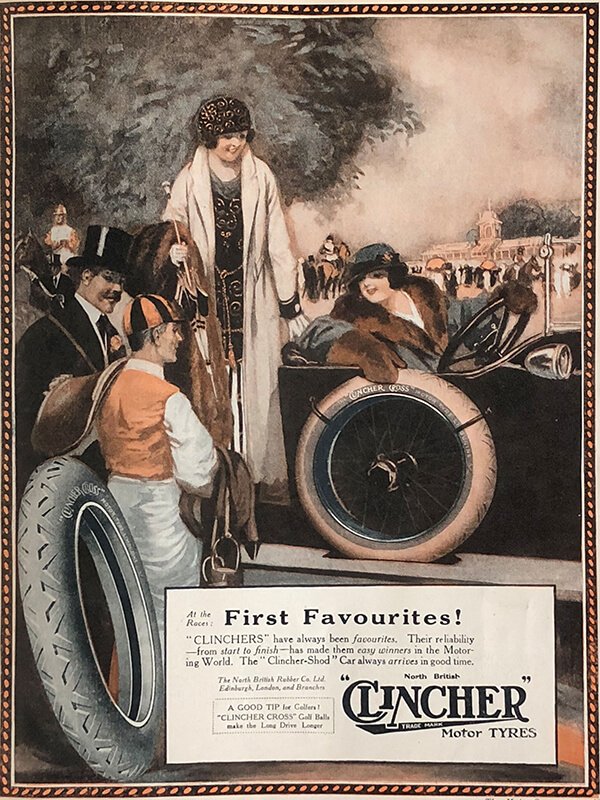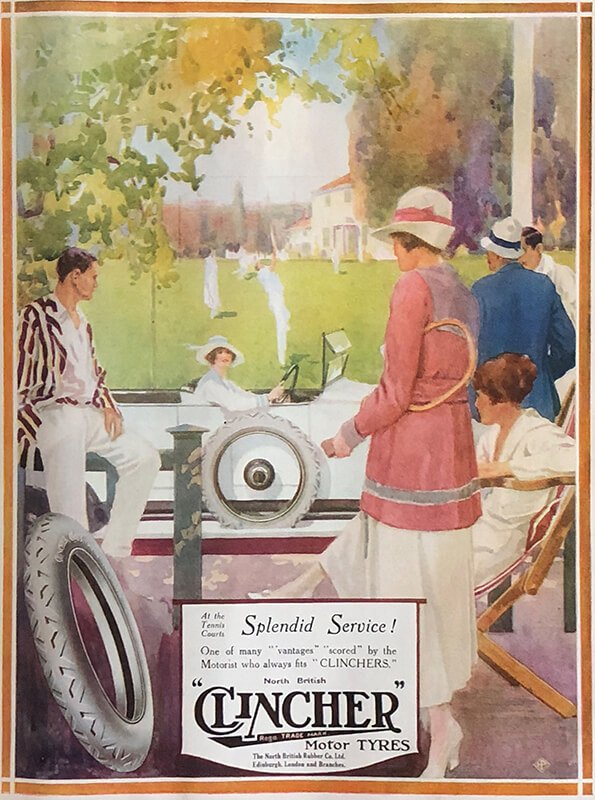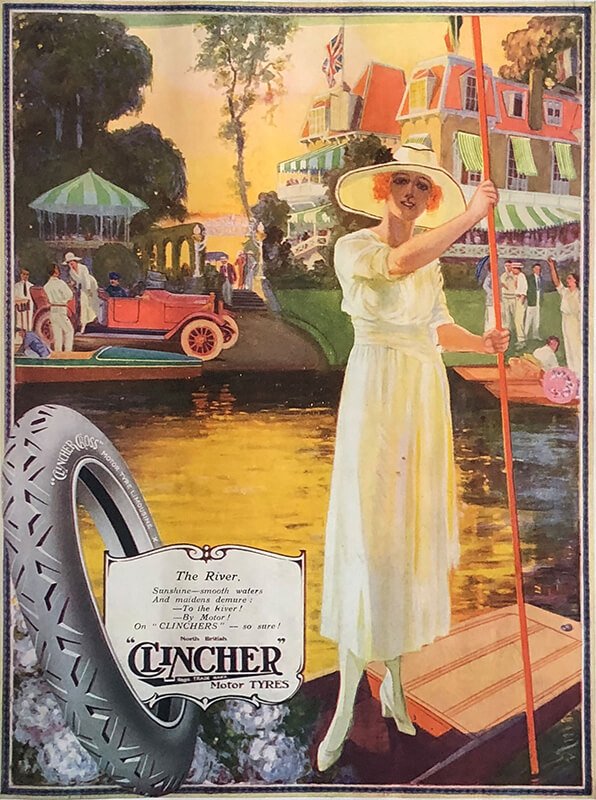Advertising tyres in 1919
Immediately following World War I there were very few UK magazines with significant colour advertising. In the automotive field it is striking, for instance, to note that Rolls-Royce’s famous series of colour advertisements with illustrations by McEvoy were only ever seen in Vogue, Colour and Motor Owner.
The last-named of these publications not only saw car manufacturers take great advantage of the impact of colour advertising. The tyre companies, too, went to town with advertisements that ranged from the sober to out-and-out flights of fancy. In just four months from June to September 1919 six tyre manufacturers and one maker of dual rims posted at least one and, in some cases, a whole series of full-page colour advertisements.
The emphasis in promotion was on performance – but lifestyle was not forgotten. In an expensive and patrician publication such as Motor Owner, good tyres were claimed to give users the pleasures of motoring in suitably upmarket pursuits.
Let us therefore start with a relatively reserved example. In June, B. F. Goodrich used stylish illustration and just black and one colour to support copy that spoke of the joys of motoring in the English countryside after four years when that was merely a dream; their safety-tread tyres, proven in wartime, would enable pleasure with security.
In the same month, Warland Dual Rims recognised the allure of a pretty lady (in a chauffeuse’s uniform, no less) to propose, in full colour, that the reader (always assumed to be a man), or his wife or daughter, could change a tyre in two minutes with no rim-cutting or broken beads. The war still cast its shadow: “Shortage of Repair Men” was the strapline.
Also in June, Wood-Milne cast restraint to the winds with allusion to Roman mythology. The chariot of Aurora was drawn by two magnificent horses and, not surprisingly, had wheels clad with the maker’s own tyres. Aurora was the goddess of the dawn (precisely identified in the copy as the glorious dawn of November 11, 1918) and was confidently stated to be a very artistic, far-seeing and punctual lady, consequently requiring tyre equipment that provided neatness, speed and security in her journey from the Orient to the Occident.
Still in June, Palmer Cord tyres brought matters back to the serious, by placing their tyres on a car in rugged countryside. The copy mentioned world records held on the track, and the persuasive fact that every fighting and bombing aeroplane that left British shores was fitted with Palmer landing wheels and tyres.
Rather less ambitious advertisements in black and one colour came in the same June issue from Avon (comparing their quality with that of a solid Stonehenge Trilithon) and Goodyear (highly technical copy on the construction of the tyre, newly arrived from the USA after success there and in Canada and Australia).
But for sheer quality of illustration the best series of colour tyre advertisements in this early post-war period was almost certainly created by Clincher. In June the lady driver was at the races (“Clinchers have always been favourites”). By August, another lady was driving her car to the tennis courts (Splendid Service!. One of the many “ ’vantages” “scored” by the Motorist who always fits “Clinchers”.) Finally, in September, the lady had descended from her chauffeur-driven car and was on the river. The connection between tyres and lifestyle had become even more terse: (… – To the River! – By Motor! – On “Clinchers” – so sure!).







